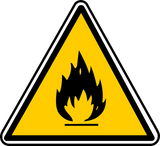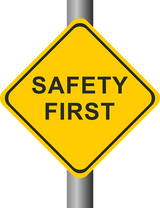Safety Tips and Precautions When Using Compressed Air
Compressed air is frequently used to clean machines and industrial equipment. It's oftentimes preferred over pressure washers due to its water-less design. Using nothing more than pressurized air, it's able to clean a wide variety of materials and surfaces without contributing to rust. The air brushes off dust, dirt and other debris, leaving behind a clean surface.
While it's considered safer than pressure washers and other industrial cleaning equipment, workers should still use caution when using compressed air. Handling or using it the wrong way can result in serious injury or even death.
Never Point Compressed Air Towards Your Body
I'm sure this is common sense to most people, but it's still worth noting that you should NEVER point the nozzle of compressed air towards your body or anyone else. There are numerous cases of workers being injured after attempting to clean themselves off with compressed air. With 70-90 pounds of pressure, industrial-grade compressed air can literally blow off skin.
Gear Up
Another potential danger of compressed air is the possibility of dislodging small particles of metal, wood and other debris from its original surface, sending it flying into the air. This can result in particles shooting into your eyes, or being breathed into your lungs. To prevent this from happening, gear up in a dust mask and safety goggles before using compressed air.
Use OHSA-Approved Nozzle
Compressed air should only be used in conjunction with an Occupational Health and Safety Administration (OHSA)-approved nozzle. These nozzles limit the pressure so there's less chance of injury. While attaching a nozzle to your air compressor may reduce its effectiveness at cleaning, it's a small change that will help protect you from injury.
Check Before Using
Try to get into the habit of checking your air compressor for signs of damage before each use. If a worker happens to drive a forklift over the line, it could result in a major air leak. When you turn the air compressor on, the air will likely shoot out through the hole rather than the nozzle.
These are just a few safety precautions to follow when using compressed air. Above all else, though, read the owner's manual to familiarize yourself with your unit's features and specifications. Each and every air compressor is different, so it's important for business owners to learn about their particular model.
Have you experienced an injury from compressed air? Let us know in the comments section below!
Recent Posts
-
Fire Safety in the Workplace: What You Need to Know
What steps are you taking to prevent fires in your workplace? According to the U.S. Occupational Saf …Aug 23rd 2023 -
Is It Safe to Go Jogging With a Cold Infection?
If you're suffering from a cold infection, you might be wondering whether it's safe to go jogging. T …Aug 22nd 2023 -
5 Safety Tips to Follow When Using a Powder-Actuated Tool
Powder-actuated tools are commonly used to join materials to steel and concrete. Also known as Hilti …Aug 20th 2023



